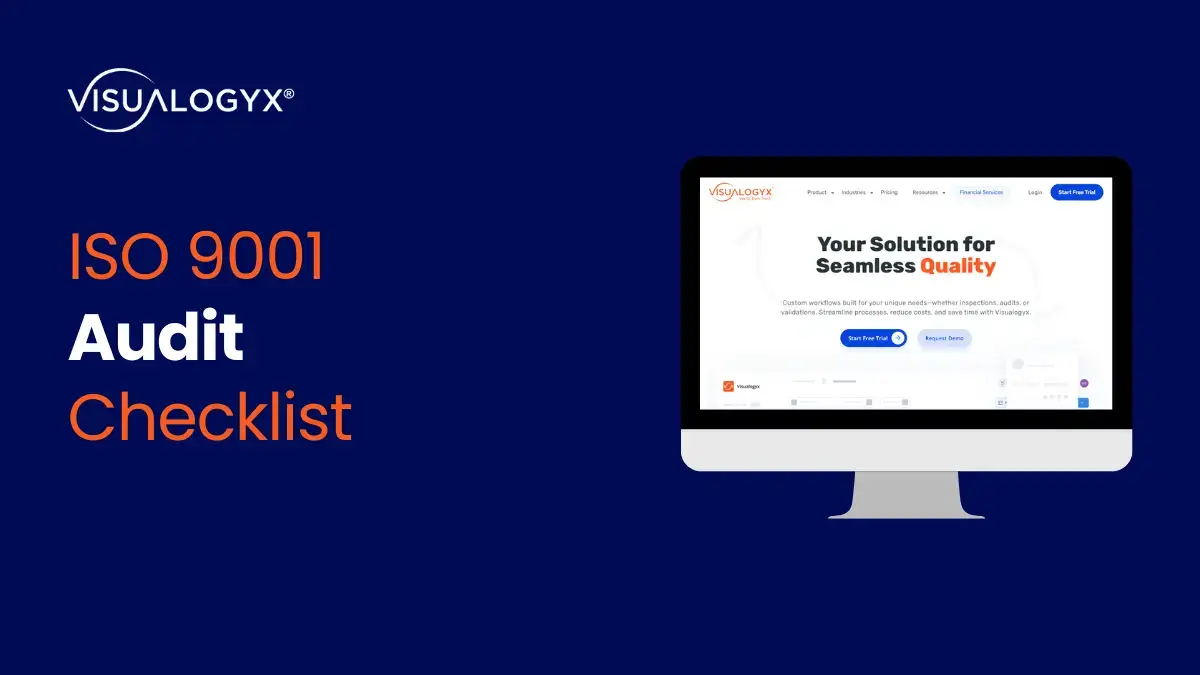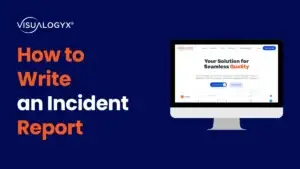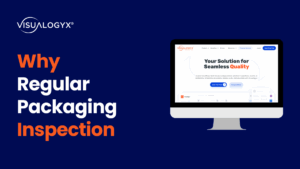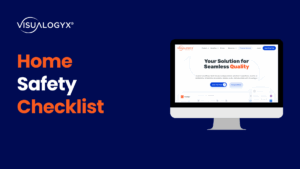Key Takeaways
- A well-structured ISO 9001 Audit Checklist is crucial for maintaining high standards of quality.
- Include all major components such as leadership, operations, documentation, and improvement plans.
- Understand the differences between internal, external, and second-party audits.
- Use tools like Visualogyx to digitize and simplify your audit process.
- Leverage available resources like iso 9001 audit checklist pdf and iso 9001 audit checklist template to standardize audit preparation.
- Align your audits with the PDCA management cycle and key principles of ISO 9001 for better compliance.
- Integrate audits with your overall ISO 9001 Implementation and performance improvement strategies.
Introduction
In today’s globally competitive market, maintaining high standards of quality isn’t just a bonus—it’s a necessity. According to the International Organization for Standardization (ISO), over 1.2 million organizations across more than 170 countries have earned ISO 9001 certification. This widely recognized standard for quality management helps businesses consistently meet customer expectations, improve operational efficiency, and achieve regulatory compliance.
However, maintaining this level of excellence requires a robust audit process. That’s where the ISO 9001 Audit Checklist becomes essential. Designed to guide internal and external auditors through the auditing process, this checklist ensures all necessary elements of the Quality Management System (QMS) are properly evaluated.Whether you’re gearing up for your ISO 9001:2015 certification or aiming to refine your internal audit procedures, this detailed blog will walk you through everything you need to know about creating and using an effective audit checklist.
What is an ISO 9001 Audit Checklist?
An ISO 9001 Audit Checklist is a structured document used by organizations to evaluate their QMS against the requirements set out by ISO 9001. It acts as a roadmap for auditors, helping them assess whether a company’s systems and processes align with ISO 9001 standards.
This checklist can come in various formats, including printed documents, spreadsheets, or even digital forms. Many businesses prefer using a downloadable iso 9001 audit checklist pdf for ease of access and record-keeping. Others opt for customizable formats like the iso 9001 audit checklist template, which allows for tailoring questions based on industry or department.
Key purposes of the checklist include:
- Ensuring compliance with ISO 9001 requirements
- Identifying gaps in the current Quality Management System
- Supporting internal audit readiness
- Preparing for third-party ISO 9001 External Audit
- Maintaining alignment with organizational goals and ISO 9001 objectives
An effective checklist is not just a document; it is a strategic tool that facilitates continuous improvement, risk mitigation, and ultimately, ISO 9001 compliance.
What are the Audit Requirements for ISO 9001?
To achieve and maintain ISO 9001 certification, organizations must adhere to specific auditing requirements. These audits are conducted to ensure ongoing conformity with the standard, and they focus on evaluating the effectiveness of your QMS implementation.
The audit requirements revolve around the following core areas:
- Leadership Commitment: Are leaders actively involved in QMS planning and execution?
- Customer Focus: Is customer satisfaction being monitored and used as input for process improvement?
- Process Approach: Are processes identified, measured, and improved?
- Risk-Based Thinking: Is risk management integrated across operations?
- Performance Evaluation: Are KPIs being monitored effectively?
These criteria reflect the key principles of ISO 9001, which focus on a customer-centric, process-oriented, and data-driven management system. Meeting these audit requirements demands a well-documented approach and evidence-based decision-making. Having a robust checklist helps organizations meet not only the ISO 9001 requirements but also improve their QMS implementation and overall business performance.
What are the Different Types of Audits in ISO 9001?
Understanding the different types of audits is essential for developing a comprehensive ISO 9001 audit checklist. The standard outlines three main types:
1. ISO 9001 Internal Audits
Conducted by the organization itself or a third-party on behalf of the organization. The purpose is to:
- Verify conformity to internal QMS policies and procedures
- Identify improvement opportunities
- Prepare for external audits
2. ISO 9001 External Audit
Performed by a certification body or regulator. This type of audit is typically divided into:
- Stage 1 Audit: Review of documentation and readiness
- Stage 2 Audit: Detailed compliance audit against ISO 9001
3. Supplier/Second-Party Audits
Conducted on vendors or suppliers to ensure they meet your QMS and ISO requirements.
Each of these audits relies heavily on the PDCA management cycle (Plan-Do-Check-Act), which helps businesses approach continuous improvement methodically. Moreover, for integrated systems, IMS Audits combine checks for ISO 9001 along with standards like ISO 14001 and ISO 45001, streamlining compliance processes.
What Should Be Included in the ISO 9001 Audit Checklist?
Creating a comprehensive audit checklist requires attention to detail. Here are the key elements to include:
1. Scope and Objectives
- Define what the audit will cover
- Clarify the ISO 9001 objectives
2. Documentation Review
- Policies, procedures, and records
- Assess alignment with ISO 9001 structures
3. Leadership and Planning
- Top management involvement
- Risk assessment and quality planning
4. Operational Processes
- Evaluation of core and support processes
- Resource allocation and efficiency
5. Monitoring and Measurement
- Internal audits, customer feedback, and non-conformance reports
- Data analysis for performance improvement
6. Continual Improvement
- Use of CAPA (Corrective and Preventive Actions)
- Evidence of PDCA cycle implementation
Templates like the ISO 9001 audit checklist template or downloadable iso 9001 audit checklist pdf can simplify this process. You may also find structured tools like the ISO 9001 template helpful in laying out an effective format tailored to your operations.
How Does Visualogyx Help You with Enhancing ISO 9001 Audits?
Traditional paper-based audits can be time-consuming, error-prone, and inefficient. Visualogyx, a leading Digital Inspection Software, offers a smarter way to manage and conduct audits aligned with ISO 9001.
Here’s how Visualogyx enhances your audit process:
- Customizable Checklists: Upload or create your own ISO 9001 audit checklist within the platform
- Real-Time Collaboration: Teams can collaborate on audits across multiple locations
- Automated Reports: Generate audit summaries instantly for better decision-making
- Evidence Management: Capture photos, videos, and documents as real-time audit evidence
By digitizing your audits, you not only ensure ISO 9001 compliance but also enhance visibility, traceability, and accountability. This not only streamlines ISO 9001 Implementation but also positions your organization for faster and more efficient QMS implementation.
Conclusion
In the journey toward consistent quality and operational excellence, the ISO 9001 Audit Checklist plays a pivotal role. It not only guides auditors through complex QMS evaluations but also strengthens an organization’s ability to meet and exceed customer expectations.
With tools like Visualogyx and strategies rooted in international ISO standards, organizations can seamlessly achieve and maintain their ISO 9001:2015 certification. Whether you’re conducting ISO 9001 internal audits or preparing for a third-party ISO 9001 External Audit, using a structured approach ensures readiness and resilience.
Embrace digital solutions, follow the checklist meticulously, and align your team with the ISO 9001 objectives. Doing so will make your path to ISO 9001 compliance not just achievable but sustainable.
FAQ’s
1) How Does ISO 9001 Certification Work?
ISO 9001 certification is a formal recognition that a company’s quality management system (QMS) meets the international standards set by the ISO (International Organization for Standardization).
Here’s how it works:
- Develop a QMS: The organization creates and implements processes that meet ISO 9001 requirements (e.g., documentation, quality policies, objectives).
- Internal Audit: The company conducts its own internal audits to ensure compliance and effectiveness.
- Management Review: Top management reviews the QMS and makes necessary improvements.
- Hire a Certification Body: An accredited third-party certifying body is chosen to perform an external audit.
- External Audit (in 2 stages):
- Stage 1: Review of documentation and readiness.
- Stage 2: On-site audit to verify implementation and effectiveness.
- Certification: If the organization meets all requirements, the certification body issues an ISO 9001 certificate (valid for 3 years).
- Surveillance Audits: Conducted annually to ensure ongoing compliance.
Recertification: Every 3 years, a full audit is done to renew the certification.
2) How Often Are ISO 9001 Audits Required?
- Surveillance Audits: Annually, conducted by the certification body to check continued compliance.
- Internal Audits: At least once a year, but frequency can depend on the organization’s size, complexity, and risk factors.
- Recertification Audit: Every 3 years, a full reassessment of the QMS is required for certification renewal.
3) What Are the 7 Principles of ISO Auditing?
These principles guide auditors in maintaining integrity and delivering value:
- Integrity – The foundation of professionalism and trust.
- Fair Presentation – Truthfully and accurately reporting audit findings.
- Due Professional Care – Applying diligence and judgment during audits.
- Confidentiality – Protecting information acquired during the audit.
- Independence – Being impartial and objective in the audit process.
- Evidence-based Approach – Basing conclusions on verifiable evidence.
- Risk-based Approach – Focusing on matters significant to the audit objectives.




